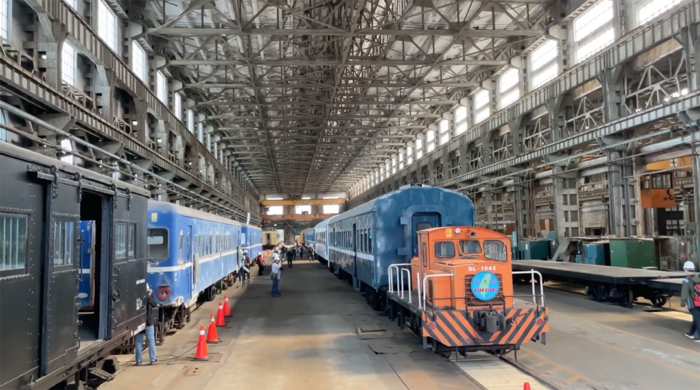臺北機廠的活化保存與國家鐵道博物館的建構
From Taipei Railway Workshop to National Railway Museum
洪致文 1 Chih-wen Hungi
摘要 Abstract
以啟用於 1935 年的臺北機廠所轉型的國家鐵道博物館,在「活的鐵道博物館」方針下,藉由「全區整備、分區修復、分區開放」的模式推動,採分區逐步修繕逐步開放之步驟,將臺北機廠活化轉型為鐵道博物館。這個工業遺產的轉型,將創造與周邊城市生活的連結,提供更豐富多元的博物館體驗與服務,以更有魅力的樣貌呈現鐵道文化,建立民眾與鐵道博物館的情感與連結。整個國家級的鐵道博物館計畫,以「環境再生」(延續保存台北機廠原環境脈絡與場域精神)、「文化再現」(重要的工業文化再現於部分場域),與「博物館建構」(置入博物館空間機能與需求)為主要轉型理念,在臺北機廠這個歷史場域,建構一座有「臺灣特色、亞洲領先、世界矚目」的國家鐵道博物館。
The Taipei Railway Workshop inaugurated in 1935 has been repurposed for the National Railway Museum. Under the guidelines of “a living railway museum,” the government employs a three-pronged strategy, i.e., “whole-area preparation with phased renovation and opening,” to revitalize and transform the Taipei Railway Workshop into the National Railway Museum. By virtue of such transformation, the Taipei Railway Workshop as a part of Taiwan’s industrial heritage will form a connection with its urban surroundings, create pluralistic museum experiences and services, turn on the charm of the railway culture, and develop emotional bonding between the public and the National Railway Museum. The philosophy behind this state-level transformation project comprises “environmental regeneration” (sustaining the original environmental context and the genius loci of the Taipei Railway Workshop), “cultural representation” (representing crucial industrial culture at part of the site), and “museum construction” (serving the spatial function of and need for a museum). It is intended to build up a national railway museum in a Taiwanese style as a bellwether in Asia and a world-renowned destination on the historical site of the Taipei Railway Workshop.
關鍵詞:臺北機廠、國家鐵道博物館、鐵道文化、鐵道歷史
Keywords: Taipei Railway Workshop, National Railway Museum, Railway culture, Railway history
1. 國立臺灣師範大學地理學系教授、首任國家鐵道博物館籌備處主任。
i. Professor, Department of Geography, National Taiwan Normal University, and the first Director of the
Preparatory Office for the National Railway Museum.


